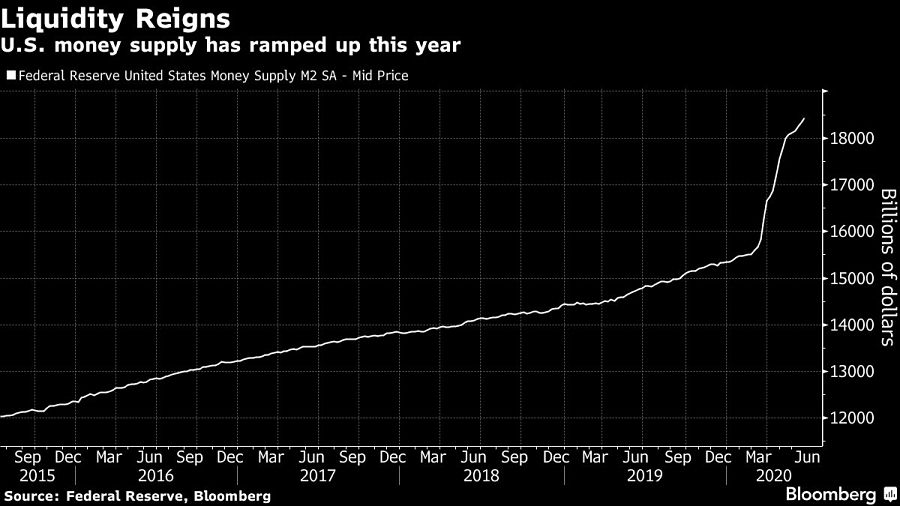

Extremely loose monetary policy will be required for a long time to support growing debt levels worldwide, buoying liquidity along with global equity and bond prices, according to JPMorgan Chase & Co.
“More debt, more liquidity, more asset reflation,” was the conclusion of strategists including Nikolaos Panigirtzoglou, who forecast a $16 trillion increase in worldwide debt this year that would push the combination of private and public sector borrowing to a record high of $200 trillion by year-end.
That will lead to higher savings rates, very accommodative central bank policies and more cash in the system -- the bulk of which may find its way into the global stock market, they wrote in a note Friday.
“Elevated cash holdings create a strong background support for non-cash assets such as bonds and equities,” the strategists wrote. Given the current low level of bond yields, “most of this liquidity will eventually be deployed into equities as the need for precautionary savings subsides over time.”

The increase in global liquidity during the coronavirus crisis has happened at a much swifter pace that during the 2008 downturn, according to JPMorgan. Total money creation could exceed $15 trillion or more by the middle of next year as quantitative easing continues at a stronger-than-normal level, the strategists wrote.
In the U.S., M2 money supply has risen $3 trillion so far this year to $18.4 trillion, according to Federal Reserve data compiled by Bloomberg.

Relationships are key to our business but advisors are often slow to engage in specific activities designed to foster them.

Whichever path you go down, act now while you're still in control.

Pro-bitcoin professionals, however, say the cryptocurrency has ushered in change.

“LPL has evolved significantly over the last decade and still wants to scale up,” says one industry executive.

Survey findings from the Nationwide Retirement Institute offers pearls of planning wisdom from 60- to 65-year-olds, as well as insights into concerns.
Streamline your outreach with Aidentified's AI-driven solutions
This season’s market volatility: Positioning for rate relief, income growth and the AI rebound
